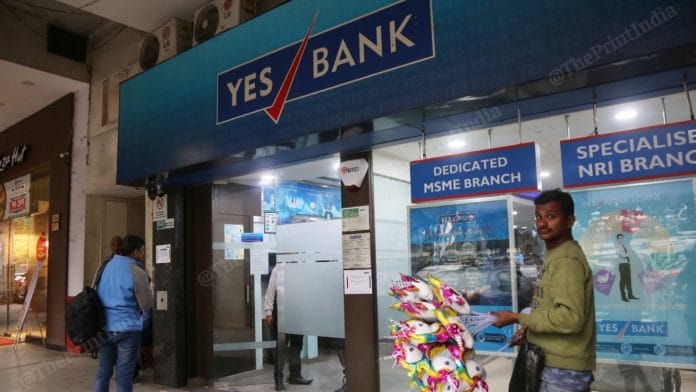Mumbai: Depositors will judge this week whether India has staved off another threat to banking sector stability when curbs on withdrawals from a recently-seized private lender are lifted.
Yes Bank Ltd. was taken over by the regulator earlier this month and has since had eight state-backed and other lenders pledge capital infusions in a one-of-a-kind rescue aimed at restoring confidence in what till recently was India’s fourth-biggest private bank.
Results over the weekend showed how dire the situation had become. Yes Bank reported nearly a fifth of its loan book had turned bad and deposits shrank 34% in just over five months. Provisioning for soured debt eroded the bank’s core capital ratio to 0.6% in the three months ended December, well below a regulatory minimum.
Now it’s left for depositors to decide whether they believe a rescue led by State Bank of India, the nation’s largest lender, will be enough to stem the rot when restrictions on withdrawals end Wednesday. Twenty months into a shadow lending crisis that has now claimed a large bank, confidence in India’s financial system is fragile. Yes Bank’s recent “deposit flight” is a cause for concern, according to Fitch Ratings.
“If the depositors are not convinced about the resolution put in place then the risk of a flight to safety is high,” said Saswata Guha, director and team head of financial institutions at Fitch Ratings. “Yes Bank would be vulnerable in that scenario, but the contagion could spread to other banks as well.”
A lack of liquidity was cited as a key reason for Yes Bank’s bailout. State Bank of India, ICICI Bank Ltd. and HDFC Ltd. are among the institutions that have said they will buy stakes in the lender since it was seized.
However, Yes might need more capital to meet the minimum regulatory norms, Fitch’s Guha said, adding that the latest round will raise the ratio by 350 basis points.
To ensure the stability of its share price — which has tanked more than 80% in the past year — the regulator has mandated that investors who hold more than 100 shares cannot sell 75% of their holding for at least three years.
The rescue is as much a test for India’s financial sector, which has suffered a series of shocks since the outbreak of a shadow banking crisis in late 2018. Policy makers have previously been forced to seize systemically-important Infrastructure Leasing & Financial Services Ltd., followed by housing finance lender Dewan Housing Finance Corp. and a local small lender to ring-fence their collapse.
On Monday, RBI Governor Shaktikanta Das reiterated depositors’ money was safe and urged them not to withdraw in panic once the curbs are lifted. On numerous occasions in the past six months, the central bank has taken to Twitter to reassure a rattled public about safety of their deposits.
RBI closely monitors all the banks and hereby assures all depositors that there is no such concern of safety of their deposits in any bank. (2/2)
— ReserveBankOfIndia (@RBI) March 8, 2020
The last thing Prime Minister Narendra Modi’s administration wants is a contagion from Yes Bank’s closure and its resultant impact on an economy that’s already expanding at its slowest pace in over a decade.
Banks including South Indian Bank Ltd. and Karnataka Bank Ltd. are among lenders that are at higher risk for reasons including their weaker capital buffers and lower provisions for loans, according to a note by Yuvraj Choudhary, an analyst at Anand Rathi Research. Meanwhile, Federal Bank Ltd. and RBL Bank Ltd. have had to issue statements to refute speculation about weaknesses in their balance sheets.
“There are lot of weak banks,” said Gaurang Shah, vice president at Geojit Financial Services. “I hope they get merged and regulators do a detailed scrutiny before they fail.” – Bloomberg
Also read: Vodafone to NHAI to SBI to solar power — Why ‘cheapest’ mantra is creating havoc in India






